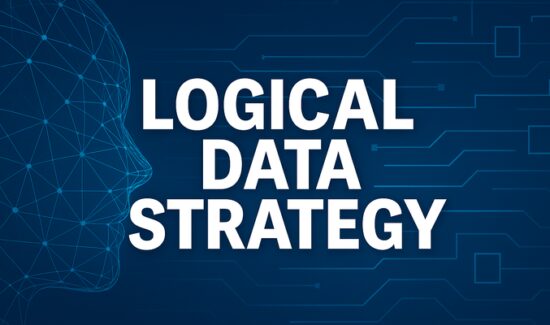The Hidden Reason AI Fails & How Knowledge Graphs Can Fix Them


The competitive edge in AI today is not about the next model on the leaderboard. Achieving a successful journey from paper to production is the most critical cog in the Data-AI-Flywheel. However, it relies on something less glamorous: a strong data foundation that includes a data strategy and data infrastructure. For enterprises seeking to unlock the powers of AI, it’s not enough to just have data. The most critical cog is establishing a robust data culture and an understanding of how data is created, managed, shared, trusted, and used.
In fact, Deloitte found 91 percent of companies expect to address data challenges in the next year, showing the criticality of data readiness for powering AI solutions. To ensure a successful AI development and deployment in enterprises, organizations should consider the following approaches to address five key challenges:
Address Data Quality
Today data debt is most prominent in the form of data quality with missing, incomplete, incoherent, and incompatible data. As organizations ingest heterogeneous data from internal and external sources, data teams encounter challenges with inconsistent formats, duplicate records, incomplete fields, outdated entries, and inaccurate data. These arise due to fragmented data systems, lack of standardization, manual errors, and insufficient governance around data and business processes. Poor data quality disrupts business operations and leads to flawed analytics, unreliable insights, and misguided strategic decisions. Additionally, it erodes stakeholder trust and increases costs due to repeated cleansing and reconciliation efforts impacting customer experience, regulatory compliance, and competitive advantage.
Organizations are increasingly leveraging knowledge graph-powered platforms to overcome the persistent data quality challenges that hinder advanced analytics and AI initiatives. Knowledge graphs connect disparate data sources into a unified semantic layer which enables enterprises to automatically detect inconsistencies, eliminate duplicates, and enrich incomplete information through intelligent context linking. It also ensures data relationships are explicitly modeled and maintained, improving accuracy, traceability, and governance across systems. Data and knowledge platforms enhance data cleansing, entity resolution, and metadata management, providing continuous validation and insight generation. As a result, organizations can transform fragmented, unreliable data into trusted, interconnected knowledge assets—fueling more accurate analytics, explainable AI models, and faster, data-driven decision-making.
Eliminate Data Silos
In modern enterprises data, content, metadata, and knowledge silos represent one of the most critical barriers to achieving true digital intelligence and agility. This fragmentation leads to duplication, inconsistent taxonomies, and disconnected insights, making it difficult for teams to get a unified view of data. Metadata silos further exacerbate the problem by obscuring context and lineage, limiting discoverability and trust in the data. Similarly, knowledge silos prevent the flow of institutional expertise across teams, slowing innovation and decision-making. The result is a significant drag on productivity, poor collaboration, and a missed opportunity for leveraging enterprise-wide intelligence. Breaking down these silos requires a connected data foundation that unifies structured and unstructured information, harmonizes metadata, and enables knowledge to flow seamlessly across systems and stakeholders.
Knowledge graphs enable organizations to break down the silos that fragment enterprise intelligence by connecting disparate systems and unifying structured and unstructured data with a semantic framework. Knowledge-powered platforms provide a holistic, interconnected view of the enterprise’s information landscape – capturing relationships and context across data sources, enriching content with metadata, and linking business concepts to create a dynamic network of knowledge. This interconnected foundation allows advanced AI and analytics tools to access trusted, contextualized data, improving model accuracy, discoverability, and explainability. A data knowledge management-powered AI platform unifies, transforms fragmented data and knowledge islands into a cohesive intelligence fabric, empowering organizations to make faster, more informed, and more strategic decisions.
Create Context and Semantics
Context and semantics are the necessary ingredients for modern data and AI platforms. As data proliferates across silos, it takes on different meanings leading to ambiguity and lack of trust, which creates downstream integration challenges. In most enterprises, data is rife with ambiguities and impreciseness, which makes it difficult to use effectively for building AI solutions. For data to be useful, it needs to be presented intuitively with contextual enrichment to end users. Context is the critical element for surfacing insights from data. Consider the word “Paris” and how to distinguish if it refers to the French city or Paris Hilton. Humans readily understand context, but machines require semantic structure to disambiguate. Reliable facts with precise semantics become especially important when implementing Generative AI. A semantic model grounds Generative AI systems, mitigating hallucinations and leveraging proprietary data.
A knowledge management platform elegantly handles heterogeneity of enterprise data integration. Providing a unified view across all data and metadata silos with a semantic layer, it is based on context and semantics enriched with metadata and domain specific ontologies, taxonomies and conceptual relationships. This semantic foundation enables GraphRAG —or Graph-based Retrieval-Augmented Generation—to go beyond traditional RAG. Instead of retrieving unstructured text chunks, GraphRAG connects queries to a trusted, context-rich knowledge graph that represents how data points relate to one another. This allows the system to retrieve reliable, explainable, and traceable information. This allows GraphRAG pattern to combine retrieval augmented generation with the semantic layer to retrieve reliable and explainable data for decision-making. This empowers end-users with accurate and traceable responses governed by semantic principles with actionable insights, while creating a foundation for advanced AI applications that require contextual understanding.
Integrate Structured and Unstructured Data
It is critical for modern enterprises to effectively leverage both structured and unstructured data for building powerful and accurate machine learning and AI solutions. Structured data provides the foundation for quantitative analysis and model training. However, the majority of enterprise data is unstructured, residing in emails, documents, chat logs, videos, social media, and other textual or multimedia formats. Ignoring this wealth of unstructured information leads to incomplete insights and biased AI outcomes. The challenge lies in integrating these diverse data types, which differ in format, quality, and accessibility, into a unified analytical framework. Without proper integration and contextual understanding, enterprises risk developing AI models that lack depth, accuracy, and real-world relevance. Successfully combining structured and unstructured data allows organizations to capture the full spectrum of intelligence, which enables richer predictions, more human-like AI interactions, and truly data-driven outcomes.
Knowledge graphs based on the Resource Description Framework (RDF) graph model, empowers organizations to build a unified semantic layer that seamlessly integrates structured and unstructured data. RDF-powered graph models can easily leverage semantic web standards that semantically integrate data from relational databases, documents, APIs, and content repositories mapped to a common, machine-interpretable format. This preserves the meaning, context, and relationships across diverse data sources, allowing AI and analytics systems to reason over information rather than simply process it. This is possible through intelligent entity linking, ontology management, and metadata enrichment, transforming fragmented datasets into a connected knowledge ecosystem. This enhances discoverability and interoperability and powers explainable and context-aware AI solutions.
Establish Data Governance and Explainability
Strong data governance and explainability are essential pillars in building trustworthy, compliant, and effective machine learning and AI solutions. As organizations increasingly rely on data-driven algorithms to automate decisions and derive insights, the lack of proper governance can lead to biased models, inconsistent data usage, and compliance with ever-evolving regulations. Without clear lineage, accountability, and oversight, it becomes difficult to ensure that data feeding AI systems is accurate, ethical, and secure.
Black-box models erode stakeholder trust and hinder adoption, especially in regulated industries like finance, healthcare, and insurance. Explainability, which is the ability to understand and articulate how AI models arrive at their predictions or recommendations, is a critical cog for enterprises to achieve responsible AI. Doing so not only mitigates risk but also enhances confidence in AI-driven decisions, enabling organizations to deploy accountable AI solutions.
Knowledge graph-powered platforms also enable organizations to have visibility into data lineage, provenance, and quality across disparate sources. This ensures that every dataset feeding a machine learning model is traceable, validated, and compliant with governance policies. Additionally, the semantic context and AI-driven insights make model behavior interpretable, supporting explainability and transparency in decision-making processes. By integrating governance, metadata management, and knowledge relationships into a single ecosystem, enterprises can develop trustworthy, auditable, and responsible AI solutions while accelerating the creation of reliable data products that drive informed business outcomes.
Key Takeaways
As enterprises increasingly rely on AI and machine learning to drive innovation, the persistent challenges of poor data quality, fragmented silos, and the absence of standardized semantics and robust governance threaten the reliability and trustworthiness of these solutions.
AI applications are evolving from simple prompt based systems to being powered by autonomous, contextually enriched autonomous multi-agents. Enterprise-scale knowledge management is becoming increasingly imperative to power these next generation AI systems. In the race to become AI-driven, incorporating architectural principles of knowledge graphs for semantics and data management for context engineering, is a facet organizations cannot afford to ignore.
AI success increasingly depends on how effectively organizations connect and contextualize their data. Knowledge-driven architectures, anchored by semantic layers and governed relationships, provide the structure needed to transform raw data into insight, and insight into confident decisions. These foundations make AI not only more accurate, but also explainable, traceable, and compliant by design.
The next generation of AI systems will not be defined by larger models, but by smarter data. By weaving semantics, structure, and governance into the heart of enterprise intelligence, organizations can move beyond experimentation to operational excellence. Better yet, they will build AI that learns responsibly, reasons transparently, and earns lasting trust.


















